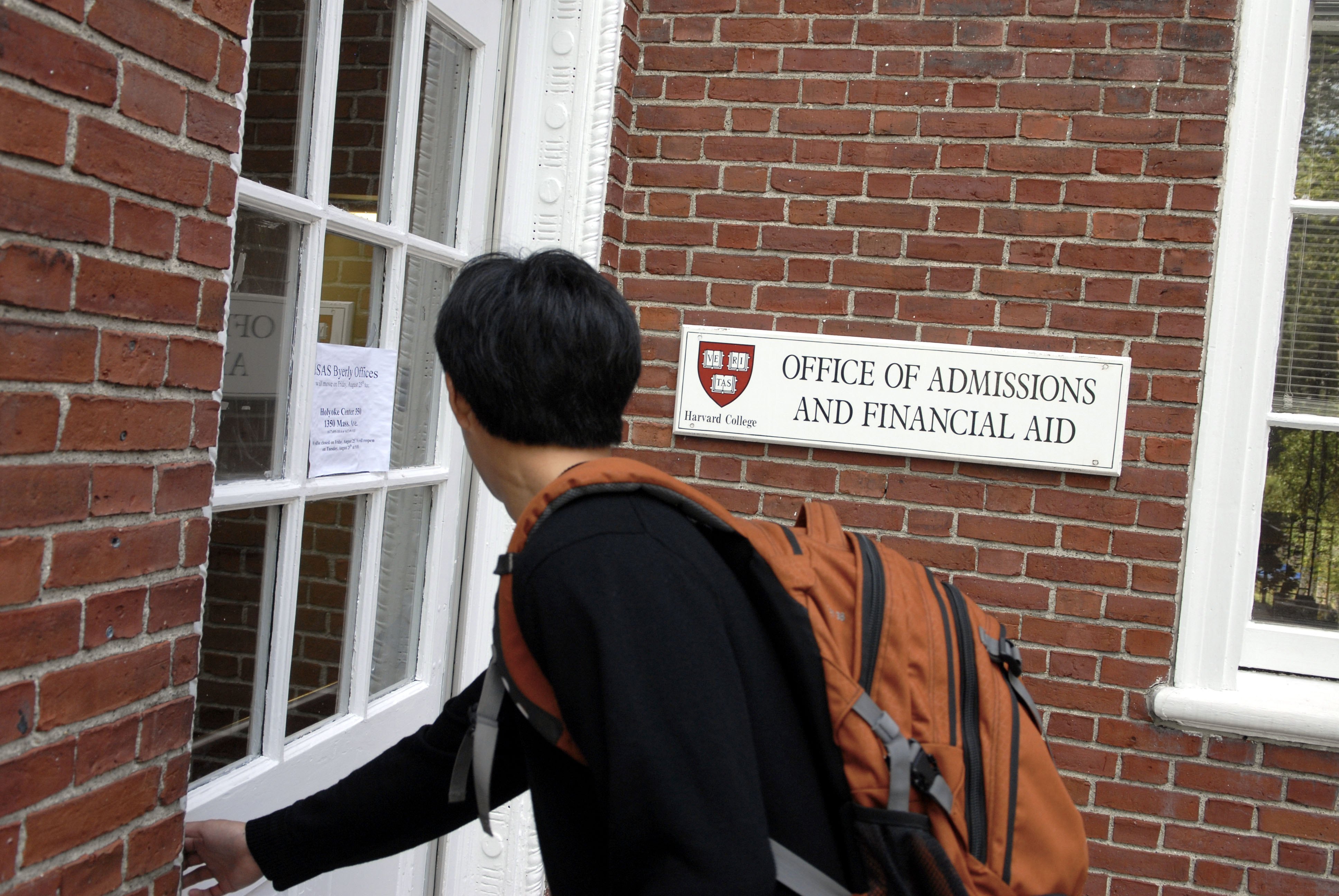How technology is upending college admissions
Goodbye, fat and thin envelopes

Gone are the days of anxious college applicants awaiting the fat or thin envelope in their mailboxes. No more truckloads of transcripts and recommendation letters piling up at the admissions office. Indeed, technology has upended the entire college application process. Here are four key ways:
1. Virtual visits
Not all students can go on a college tour, and those who do are likely to miss scores of campuses that would be a great fit. That's why many colleges are offering virtual tours, with varying degrees of sophistication. A basic "visit" involves going online to watch a video tour, often led by a student. Some are interactive, allowing the visitor to choose what to explore and how in depth. There might be 360-degree views where one can really look around. "When you think of the vibe of an on-campus visit, we're trying to recreate that online," Kent Rinehart, dean of admissions at Marist College in Poughkeepsie, New York, told The Week.
The Week
Escape your echo chamber. Get the facts behind the news, plus analysis from multiple perspectives.

Sign up for The Week's Free Newsletters
From our morning news briefing to a weekly Good News Newsletter, get the best of The Week delivered directly to your inbox.
From our morning news briefing to a weekly Good News Newsletter, get the best of The Week delivered directly to your inbox.
Marist's tour was developed by YouVisit, a company founded by three Brandeis University alumni from Jordan, Albania, and Colombia, respectively. They knew firsthand the difficulties foreign students have when researching schools in the U.S. "Selecting from the thousands of colleges, it's a daunting experience," Abi Mandelbaum, the co-founder from Colombia, told NPR. "We had friends who came and didn't end up with a right fit. They ended up transferring."
Virtual reality tours, meanwhile, take the remote-visiting experience to a whole other level. Savannah College of Art and Design mailed 10,000 cardboard VR headsets last year to students who had been accepted but hadn't decided yet on enrolling. It's a way that "you cannot just see but experience a place," SCAD's Vice President of IT, Brad Grant, told the Los Angeles Times. "If you're talking about a painting studio, we can get a camera assembly inside that environment, and when you put on the goggles you can experience what it would be like to be in a painting studio full of students."
2. Live chats
Go to the admissions website of the Savannah College of Art and Design, and you are invited to chat online right then with someone in the admissions office. That kind of direct, personal attention helps students get the answers they need to evaluate a school. Colleges like Penn State schedule group chats for international students, accepted students, and prospective students. Hamilton College, in Clinton, New York, calls it chatting with "members of the Hamilton College family." Accepted students can chat privately with an admissions or financial aid officer or drop in on "Chatapalooza," a 12-hour marathon chat session with admissions and current students.
A free daily email with the biggest news stories of the day – and the best features from TheWeek.com
A step up is the one-on-one video chat, sometimes used for faraway students, especially international ones, for admissions interviews. It also can be a tool for admitted students to learn more, for instance by chatting with a faculty member or a current student from the applicant's country.
3. Social media
Sure, you can meet colleges on Facebook and follow them on Twitter and Instagram. But once admitted, you can also often join a private online community for admitted and current students. The school-hosted platforms work like Facebook, with profiles, friend connections, and message boards where students can find peers who are from their town, pursuing their same major or activities, or have other common interests.
Creating a sense of community before a student even enrolls is believed to increase their comfort level with the school — and the likelihood they'll accept an offer of admission. "Students choose a college based on its academic program, prestige, and their gut," Rinehart said. "We feel if students make those connections with future classmates, it makes a difference in their decision-making."
4. Innovations in applying
Long gone are handwritten essays and recommendation letters snail-mailed to campus. The recent standard has been The Common Application, an online application the student fills out once and submits to several schools (many of which also require supplemental material).
A new online application is on the horizon, however, courtesy of the Coalition for Access, Affordability, and Success. The organization of more than 80 public and private colleges — including all the Ivies, Stanford, Vassar, Amherst, and the University of Michigan — aims to improve and streamline the college application process for all students. Among its offerings will be virtual college lockers: free, online spaces that high schoolers can start using in ninth grade. They work like Google Drive or DropBox, and serve as a home for students' videos, photos, written work, notes about colleges, and other materials that will be helpful down the line when they start applying. Students' can even invite people, such as their parents or guidance counselors, to view the portfolio and offer advice.
By encouraging students to start preparing early in high school, "when they get to their junior year there isn't this terror, 'Oh, my God, it's time to apply to college,'" James G. Nondorf, coalition president and dean of admissions and financial aid at the University of Chicago, told The New York Times.
While the online tools will be available to all students, the coalition hopes they will level the playing field for those, such as low-income and first-generation college prospects, who may receive fewer visits from recruiters or have less outside help. The services launch in April for high school freshmen, sophomores, and juniors, and many colleges will start using the new application as soon as this summer.
-
 Why it’s important to shop around for a mortgage and what to look for
Why it’s important to shop around for a mortgage and what to look forThe Explainer You can save big by comparing different mortgage offers
-
 4 ways to save on rising health care costs
4 ways to save on rising health care costsThe Explainer Health care expenses are part of an overall increase in the cost of living for Americans
-
 How to financially prepare for divorce
How to financially prepare for divorceThe Explainer Facing ‘irreconcilable differences’ does not have to be financially devastating